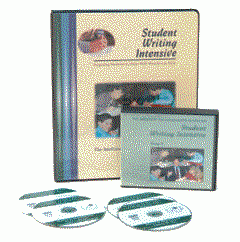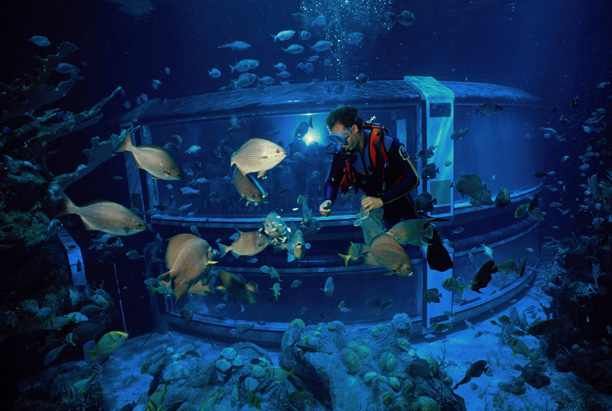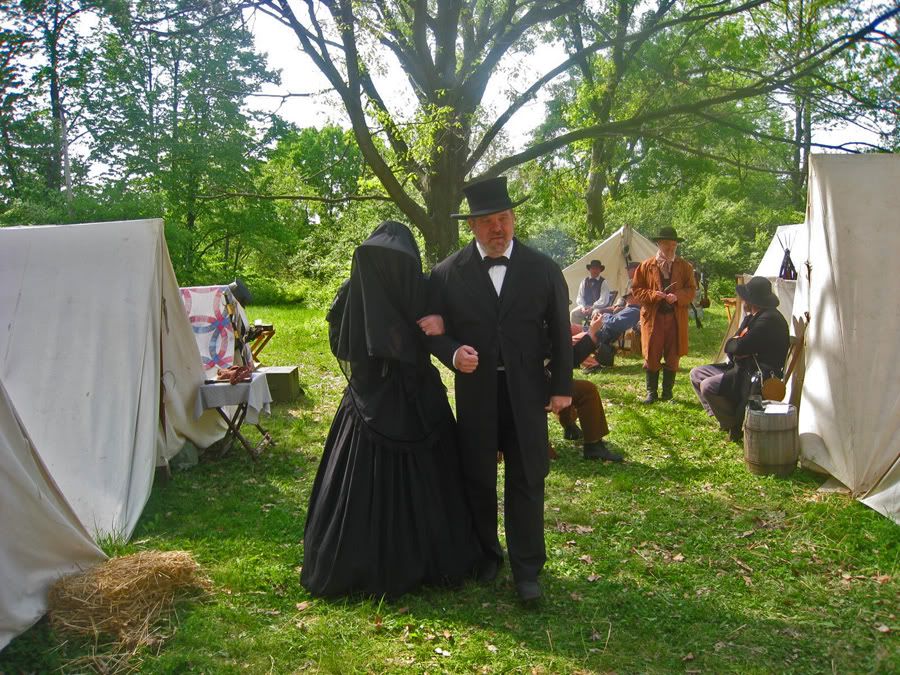When it comes to teaching my Schnickelfritz, I feel I'm not the typical homeschool mom. Subjects like math and science thrill me, I took calculus and two physics classes in college. Its the Language Arts that perplex me. Yes, I know how to read and write and I did well in those subjects but for the life of me I can't remember how I was taught. It's probably just as well because I was the little girl who loved to write page after page in creative writing andmy son is the boy who'd rather build with blocks all day. When the opportunity came up to review the products from The Institute for Excellence in Writing, I jumped on it. Perhaps this would be the panacea to my need for teaching guidance and my son's disdain to put pen to paper. I won't make you wait till the end of the review--the answer is yes!
I received the Combo Kit Level A ($239) consisting of the Teaching Writing Structure & Style (TWSS) and the Student Writing Intensive (SWI) as well as a Portable Wall ($7). We'll cover each of these in turn.
Teaching Writing Structure & Style
Very few curricula I've come across begin with such a thorough course on teaching the teacher how to teach. This is almost like attending a week-long seminar on Language Arts but you can do it at your own pace and in your PJs. There is a handbook with lecture notes and sample lessons (yes, you will be expected to do exercises similar to those you will be assigning your kids). In the pages you will find ideas for posters and visual aids, tips for adjusting the program for lower grades, samples of student writing, and a list of all the stylistic techniques you will be teaching. These is not, however, enough material to use the handbook alone. You'll need to view the videos to get a true understanding of the program. There are six DVDs with the teacher workshops covering all nine units of TWSS. One DVD, created several years later, contains tips and tricks to using the program. Finally, there are three DVDs showing Andrew Pudewa teaching Units 1 & 2, each to a different age audience (2nd - 4th grade, 5th - 7th grade, 8th-10th+ grade). When you feel confident using the techniques in the program, you can use source documents from you own child's science or history curriculum as the basis to teach writing. Your one time investment in TWSS can be used for the rest of your childs homeschooling years. If you still don't feel sure about how to teach writing you can let Mr. Pudewa "do the talking" with the next product....
come across begin with such a thorough course on teaching the teacher how to teach. This is almost like attending a week-long seminar on Language Arts but you can do it at your own pace and in your PJs. There is a handbook with lecture notes and sample lessons (yes, you will be expected to do exercises similar to those you will be assigning your kids). In the pages you will find ideas for posters and visual aids, tips for adjusting the program for lower grades, samples of student writing, and a list of all the stylistic techniques you will be teaching. These is not, however, enough material to use the handbook alone. You'll need to view the videos to get a true understanding of the program. There are six DVDs with the teacher workshops covering all nine units of TWSS. One DVD, created several years later, contains tips and tricks to using the program. Finally, there are three DVDs showing Andrew Pudewa teaching Units 1 & 2, each to a different age audience (2nd - 4th grade, 5th - 7th grade, 8th-10th+ grade). When you feel confident using the techniques in the program, you can use source documents from you own child's science or history curriculum as the basis to teach writing. Your one time investment in TWSS can be used for the rest of your childs homeschooling years. If you still don't feel sure about how to teach writing you can let Mr. Pudewa "do the talking" with the next product....
Student Writing Intensive
The Level A bundle comes with four DVDs filmed during a four-day student writing seminar. A binder organizes all the writing source documents, key word outlines, work in progress, and finished work. The students wil

l also be building their own reference material throughout the course and fill sections for structure models, stylistic techniques, and lists of banned words and synonyms to replace them. A manila envelope contains all the source documents that will be used (I chose to hand them out as called for rather than put them all in the binder ahead of time). The back side of the source documents gives the students a list of expected format and stylistic techniques to include in their composition. This also provides the teacher with a very objective means to grade the work (assuming you give grades, I don't yet). We're basing this on structure and style, not content so you may mark mechanical issues that need to be corrected and make sure the student has used each of the techniques they've been taught. This package is also available in Levels B and C. The levels are based on reading levels of source texts and speed with which the techniques are taught. A family with multiple children of different grades could watch the Level B DVDs and the mom could substitute Aesops Fables as the source texts for younger students.
Portable Wall
Throughout the TWSS manual are countless examples of reminder signs you make want to enlarge and post on your walls. They can cover techniques like remembering to double space your writing or it may be an overused word you'd like to "ban" and some appropriate replacements. Of course there are some out there who homeschool in their dining room anddon't want guests to be subjected to 100 alternatives to the word "said" when they come over for dinner. Perhaps your walls are already covered with nature posters and timelines or children's artwork. If so, a "portable wall" may be of help. The trifold structure is sturdy enough to stand on its own andmay provide a little seclusion for an intense writer. You'll find handy reminders for each of the nine units, lists of the stylistic techniques (dress-ups, sentence openers, decorations, triple extensions), a list of "ly" words, prepositions, and stronger words choices to replace said, see, go, like, eat, and make. That's a lot to cover on six pages!

So what did we actually learn you may be asking. I'll share each of the units with you. Some we accomplished, some we haven't gotten to yet, some were not even covered in Level A because it's just beyond the students ability at this age or because we're are still trying to make this somewhat appealing to the boy who'd rather play with blocks.
Unit 1 - It's rather difficult to separate Units 1 and 2 in either the TWSS materials or the SWI Level A. Technically, Unit 1 covers creating a Key Word Outline (KWO) by taking three words from each sentence in a short paragraph. The text could be a short story (like Aesop's fables) or a non-fiction work. The words should trigger your memory on the gyst of the sentence. I did review the sample lesson for high-schoolers who were allowed up to four words as their sentences were much longer and more complex in structure. Numbers and symbols are freebies andaren't included in the word count (my son loved coming up with symbols). In the student material we never stopped at merely creating an outline but continued to Unit 2 and the reconstruction of a paragraph based on our KEO. The TWSS manual does suggest introducing students to public speaking using the KWO as their notes. The student looks at the key words, formulates a sentence and then looks up at the audience to deliver the sentence--no opportunity to keep their noses buried in the pages of a completelywritten out speech. The older student sample lesson also spent more time on Unit 1 with an exercise on note taking based on a teacher's lecture.
Unit 2- The students use their Key Word Outlines as a basis to create their own paragraph. Fritz, who has a knack for memorizing Bible verses, could often remember the original sentences verbatim--and that's all right to begin with. This unit continues by teaching the students to make the writing their own by dressing up sentences with stronger verbs and more descriptive adjective choices. They may combine two original sentences by turning one into a "who/which" or "because" clause. There are six basic dress ups to be learned one at a time. You don't move on to the next clause until you can demonstrate mastery and you are expected to use
each dress-up learned in
eachparagraph you write. Some people may worry that this creates a formula for good writing. On the contrary, some of the results were very hard on the ear--especially when my Schnickelfritz took a liking to one and would try to use it over and over again. The point is to keep using the new skill so that just like exercising a muscle it will grow and be ready for use when needed. Another way to provide more originality if for the student to change the setting or characters in their story. Instead of repeating the story of a boy whose hand got stuck in a jar of nuts, Fritz wrote about a boy anda girl who found treasure in the knothole of a fallen tree.
Unit 3--We will still be creating Key Word Outlines, but instead of choosing three words from each sentence, we will be choosing words that answer the 5 W's and an H questions about a story: Who are the main characters? Where and When do they live? What do they need? How do they solve their problem? We will still be using our six dress-ups, true for all the units of the course. The writing assignments get longer--usually three paragraphs introducing the characters and setting, explaining the problem, and resolving the conflict. We also learn how to create an eye-catching title that ties into the final sentence of our work. This is as far as we got in our own use.
Unit 4--This unit is a continuation of Units 1 and 2 as far as forming a KWO and reconstructing a new, dressed-up paragraph, but the source may be a much longer paragraph or several paragraphs and taking three words from each sentence would be too cumbersome. Now we will just focus on 4-5 details out of the many given and we may endup with 1-3 paragraphs, each containing its own subtopic. On the SWI DVD number 3 we are supposedly covering Unit 4, but then Mr. Pudewa hands out four different articles on whooping cranes and multiple sources is really Unit 6.
Unit 5--This is not covered in Level A, but I gathered the information from TWSS. We return to fiction this time and call on more creativity. There is no longer a source story but a series of three pictures. The KWO is based on facts that can be determined in the pictures.
Unit 6-- While not specifically mentioned in our Level A material we were in fact drawing information from multiple sources. This appears to be as close we come to the traditional research paper I can remember from my school days. There doesn''t apear to be anything covering citing sources, footnotes, or creating a bibliography so you might need to suppliment with your own teaching.
Unit 7-- It is not labeled as such, but Disk 4 of the Level A SWI really covers this material. There is no longer a source text. Instead, the student organizes information stored in their own noggin to write about anything! It can take the form of a letter to grandma summarizing a recent camping trip or an explanation of why they love their dog.
Units 8 & 9 --These are not covered in Level A but are Writing Essays and Critiques respectively. I would assume both these units would be in Level C.
This review is getting so long and there's much more to add, but I will refer you to prior postings I've done :
We will be using IEW again next year as we still have so much more to learn. As for results, my son has put aside his blocks and is writing his own Hank the Cowdog story with his free time. I feel at peace with the support IEW has given me, not only to teach the subject but suggestions in how to grade it objectively.
You'll want to check out all the products on the IEW website. In addition to writing by Levels, there are themed source materials (history, life science, Bible, etc.). There are helpful articles and

 While the principle is true for all the themed vessels in Disney's flotilla, we focus on the Mark Twain Riverboat. How can something that weighs so much float? Asa has a large container of water and a wooden cube that floats. A metal cube of the same size sinks to the bottom. In order to make the metal object float we need to change it's shape to displace more water. When the weight of the water being displaced exceeds the weight of the object it will float. By flattening out the bottom and raising the sides, the boat pushes away more water, but the additional volume holds air which doesn't add to the weight.
While the principle is true for all the themed vessels in Disney's flotilla, we focus on the Mark Twain Riverboat. How can something that weighs so much float? Asa has a large container of water and a wooden cube that floats. A metal cube of the same size sinks to the bottom. In order to make the metal object float we need to change it's shape to displace more water. When the weight of the water being displaced exceeds the weight of the object it will float. By flattening out the bottom and raising the sides, the boat pushes away more water, but the additional volume holds air which doesn't add to the weight.  principles of buoyancy with a scuba diver in the big tank. First he needs to add weights to his weight suit to overcome the natural tendency to float. Then he either adds air or releases it from his buayancy compensator vest to ascend or descend in the water. He can also stay at a stable level (neutral buoyancy). Some fish have built in swim bladders to accomplish the same thing. Others, like a shark, would sink to the bottom if they stopped swimming. There is also an experiment with an empty milk jug showing how pressure increases on all sides as you go deeper in water. Interesting note: the large windows of the tank are six inches think at the bottom than the top and are only held in place by the pressure of the water.
principles of buoyancy with a scuba diver in the big tank. First he needs to add weights to his weight suit to overcome the natural tendency to float. Then he either adds air or releases it from his buayancy compensator vest to ascend or descend in the water. He can also stay at a stable level (neutral buoyancy). Some fish have built in swim bladders to accomplish the same thing. Others, like a shark, would sink to the bottom if they stopped swimming. There is also an experiment with an empty milk jug showing how pressure increases on all sides as you go deeper in water. Interesting note: the large windows of the tank are six inches think at the bottom than the top and are only held in place by the pressure of the water. Sometimes it may not be so obvious that fluids are involved in a Disney attraction. Take the Dinosaur ride and Animal Kingdom. This ride takes place in a car--no water in sight. If you could peel away the "skin" of the large audio-animatronics you would find hydraulic pumps at work. The uncompressible liquids being force through small tubes are capable of applying thousands of pounds of pressure and move the limbs and necks of the massive creatures. Disney is very reluctant to ruin the "magic" for anyone so they don't actually show the animatronics without its covering, instead it's explained with a cartoon image.
Sometimes it may not be so obvious that fluids are involved in a Disney attraction. Take the Dinosaur ride and Animal Kingdom. This ride takes place in a car--no water in sight. If you could peel away the "skin" of the large audio-animatronics you would find hydraulic pumps at work. The uncompressible liquids being force through small tubes are capable of applying thousands of pounds of pressure and move the limbs and necks of the massive creatures. Disney is very reluctant to ruin the "magic" for anyone so they don't actually show the animatronics without its covering, instead it's explained with a cartoon image.

 carry a bag or two of books to pass on. Imagine my dismay then to discover I'm part of a dying breed. My last review for this Homeschool Crew voyage is the book Read For the Heart published by Apologia. In it, author Sarah Clarkson cites that less than half of adults in America now read literature. Even worse, less than a third of 13-year-olds are daily readers (how does this bode for our future)?
carry a bag or two of books to pass on. Imagine my dismay then to discover I'm part of a dying breed. My last review for this Homeschool Crew voyage is the book Read For the Heart published by Apologia. In it, author Sarah Clarkson cites that less than half of adults in America now read literature. Even worse, less than a third of 13-year-olds are daily readers (how does this bode for our future)?







 come across begin with such a thorough course on teaching the teacher how to teach. This is almost like attending a week-long seminar on Language Arts but you can do it at your own pace and in your PJs. There is a handbook with lecture notes and sample lessons (yes, you will be expected to do exercises similar to those you will be assigning your kids). In the pages you will find ideas for posters and visual aids, tips for adjusting the program for lower grades, samples of student writing, and a list of all the stylistic techniques you will be teaching. These is not, however, enough material to use the handbook alone. You'll need to view the videos to get a true understanding of the program. There are six DVDs with the teacher workshops covering all nine units of TWSS. One DVD, created several years later, contains tips and tricks to using the program. Finally, there are three DVDs showing Andrew Pudewa teaching Units 1 & 2, each to a different age audience (2nd - 4th grade, 5th - 7th grade, 8th-10th+ grade). When you feel confident using the techniques in the program, you can use source documents from you own child's science or history curriculum as the basis to teach writing. Your one time investment in TWSS can be used for the rest of your childs homeschooling years. If you still don't feel sure about how to teach writing you can let Mr. Pudewa "do the talking" with the next product....
come across begin with such a thorough course on teaching the teacher how to teach. This is almost like attending a week-long seminar on Language Arts but you can do it at your own pace and in your PJs. There is a handbook with lecture notes and sample lessons (yes, you will be expected to do exercises similar to those you will be assigning your kids). In the pages you will find ideas for posters and visual aids, tips for adjusting the program for lower grades, samples of student writing, and a list of all the stylistic techniques you will be teaching. These is not, however, enough material to use the handbook alone. You'll need to view the videos to get a true understanding of the program. There are six DVDs with the teacher workshops covering all nine units of TWSS. One DVD, created several years later, contains tips and tricks to using the program. Finally, there are three DVDs showing Andrew Pudewa teaching Units 1 & 2, each to a different age audience (2nd - 4th grade, 5th - 7th grade, 8th-10th+ grade). When you feel confident using the techniques in the program, you can use source documents from you own child's science or history curriculum as the basis to teach writing. Your one time investment in TWSS can be used for the rest of your childs homeschooling years. If you still don't feel sure about how to teach writing you can let Mr. Pudewa "do the talking" with the next product.... l also be building their own reference material throughout the course and fill sections for structure models, stylistic techniques, and lists of banned words and synonyms to replace them. A manila envelope contains all the source documents that will be used (I chose to hand them out as called for rather than put them all in the binder ahead of time). The back side of the source documents gives the students a list of expected format and stylistic techniques to include in their composition. This also provides the teacher with a very objective means to grade the work (assuming you give grades, I don't yet). We're basing this on structure and style, not content so you may mark mechanical issues that need to be corrected and make sure the student has used each of the techniques they've been taught. This package is also available in Levels B and C. The levels are based on reading levels of source texts and speed with which the techniques are taught. A family with multiple children of different grades could watch the Level B DVDs and the mom could substitute Aesops Fables as the source texts for younger students.
l also be building their own reference material throughout the course and fill sections for structure models, stylistic techniques, and lists of banned words and synonyms to replace them. A manila envelope contains all the source documents that will be used (I chose to hand them out as called for rather than put them all in the binder ahead of time). The back side of the source documents gives the students a list of expected format and stylistic techniques to include in their composition. This also provides the teacher with a very objective means to grade the work (assuming you give grades, I don't yet). We're basing this on structure and style, not content so you may mark mechanical issues that need to be corrected and make sure the student has used each of the techniques they've been taught. This package is also available in Levels B and C. The levels are based on reading levels of source texts and speed with which the techniques are taught. A family with multiple children of different grades could watch the Level B DVDs and the mom could substitute Aesops Fables as the source texts for younger students.



 What goes up must come down. We've all heard that saying before but this week we've actually begun to study the concept of Gravity with another Disney educational DVD. We don't usually think about gravity because we've always been exposed to it. The imagineers discover ways to mani
What goes up must come down. We've all heard that saying before but this week we've actually begun to study the concept of Gravity with another Disney educational DVD. We don't usually think about gravity because we've always been exposed to it. The imagineers discover ways to mani





